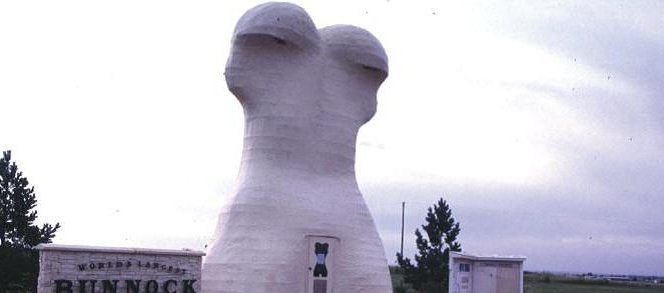
Macklin: heritage helps define community
Macklin – A small town hugging the Alberta border. This extreme westerly area in Saskatchewan was relatively late to be settled. European settlers had only begun to seek settlement in 1906. The first passenger train arrived in January 1910. The community was officially formed in 1912.
Initially, Macklin’s citizens were too concerned with survival to concentrate much on commemorating and preserving their heritage. However, as early as 1935, the Fourth meridian Old Timers’ Association was formed, and since then its members and other community groups have had a lengthy history of commemorating and celebrating Macklin’s heritage. The community’s preservation includes a memorial gate at the cemetery, the Macklin History Book published in 1992, the Centennial monument erected as part of the 2005 Saskatchewan Centennial, a modern Cenotaph honouring the major overseas conflicts, and the Macklin Lake Historic Walking Trail which features 12 commemorative plaques on a five kilometre nature trail.
While working on the trail, historians became aware of some of Macklin’s famous former residents, including Agnes martin, a world-famous minimalist painter who was born in 1912, and Clarence Campbell, who went on to become president of the National Hockey League, to name a few.
Macklin is also known as the “Home of the World’s Largest Bunnock”. This notorious monument, a 32-foot high replica of a bunnock (a horses’ foreankle bone), houses the community’s information booth. It represents the community’s active interest in bunnock, a German heritage game. The three-day, Annual World Championship Bunnock Tournament attracts over 10,000 visitors to Macklin each year, not to mention the interest of younger residents.
Macklin’s heritage imprint may still escape many local residents and students, but its tributes, plaques and writing are a legacy for those of tomorrow. How often do residents allow the remarkable drama to slide away with the passing years We heed not what once was ours; believing it will always be so. But without effort and concerted preservation, so much of the texture of our fabric can be flattened under the iron of time, under the effort of building a future and the challenges of survival.
The community is currently working on a new publication called ‘The Centenarians’, which will celebrate the lives and contributions of those who lived in Macklin in 1912, as well as a drama production entitled “Settling this Prairie”, which will be part of the community’s Centennial celebrations.

